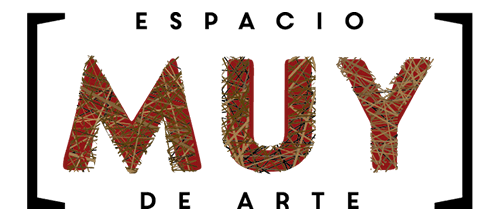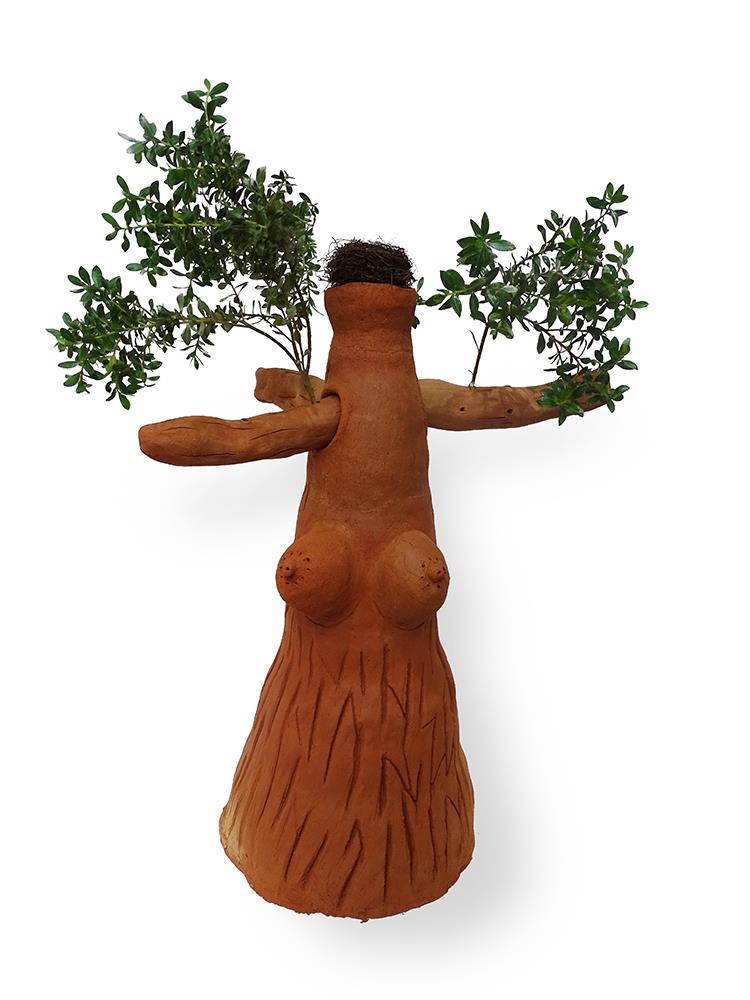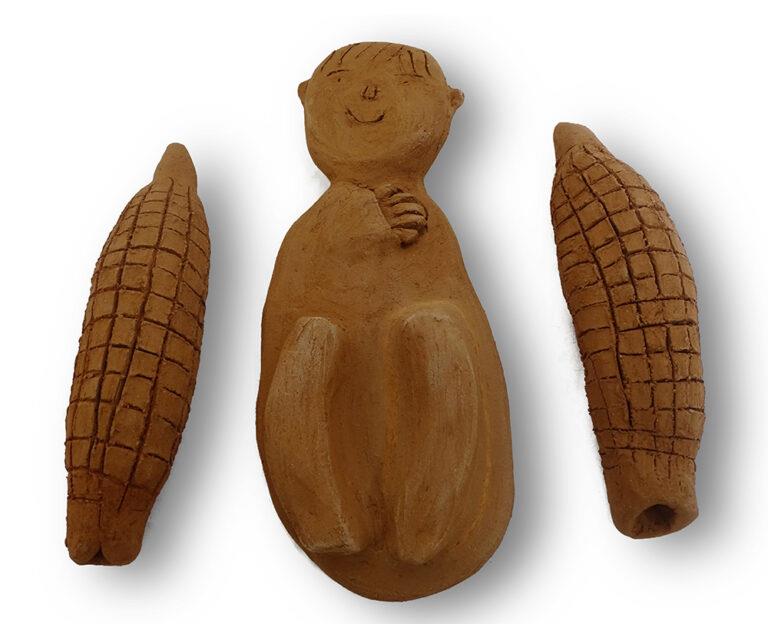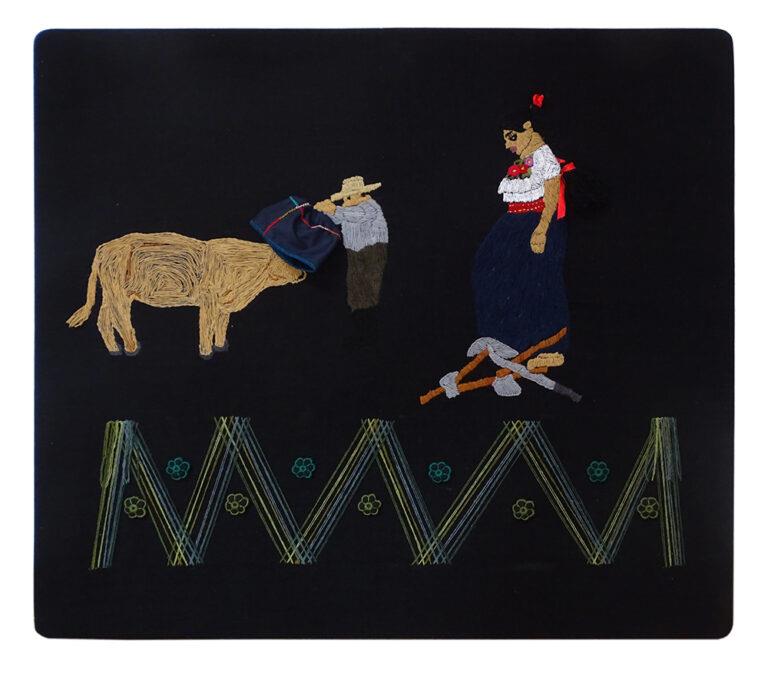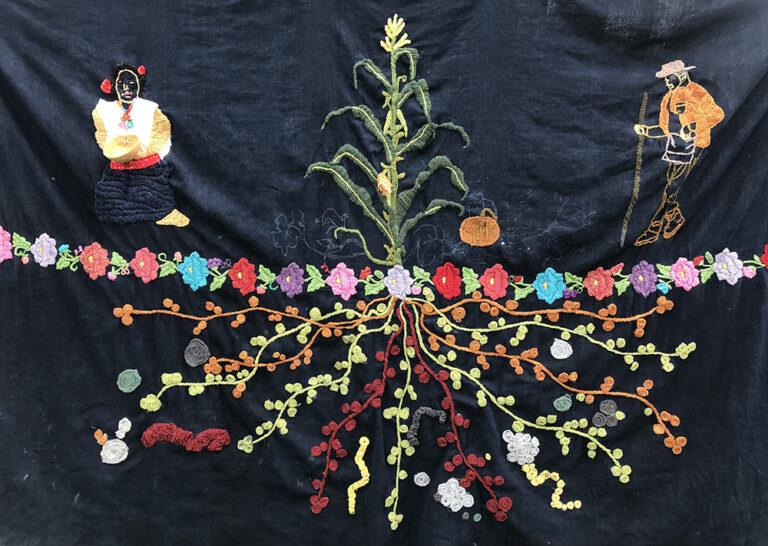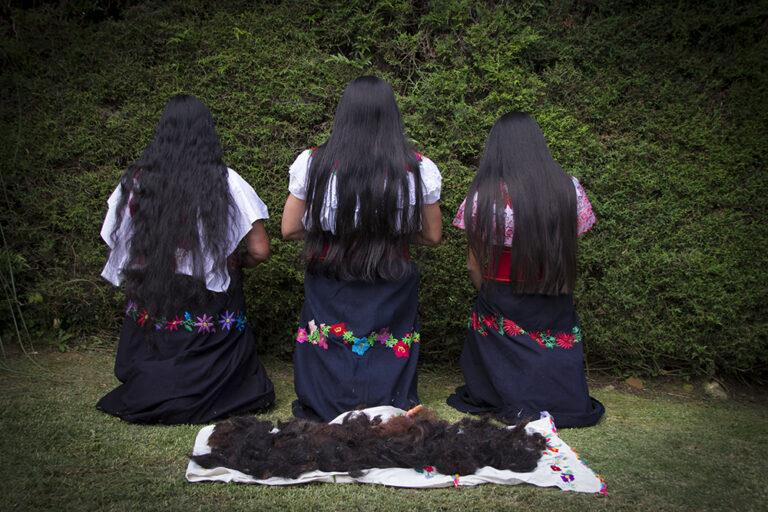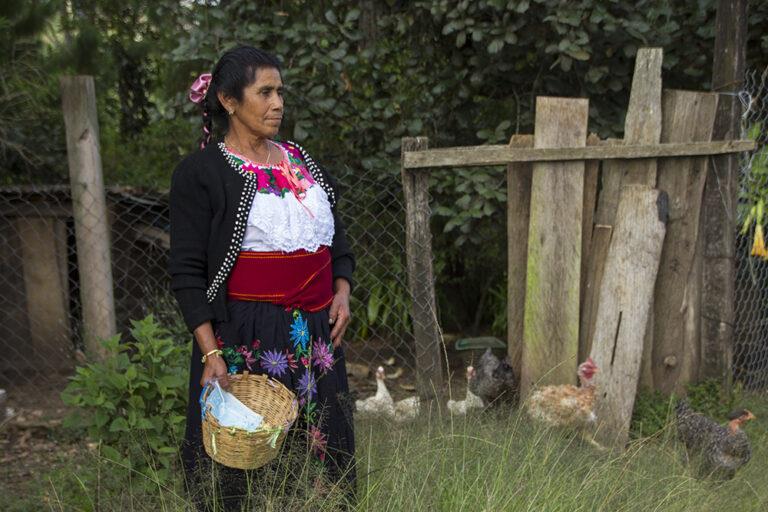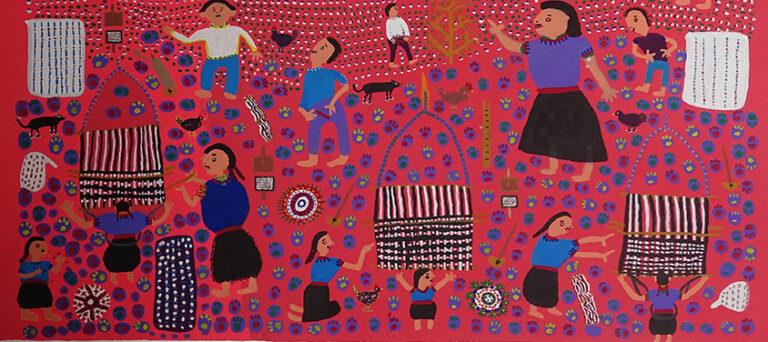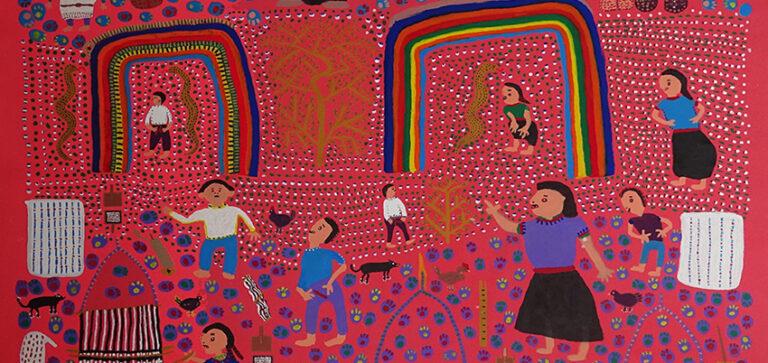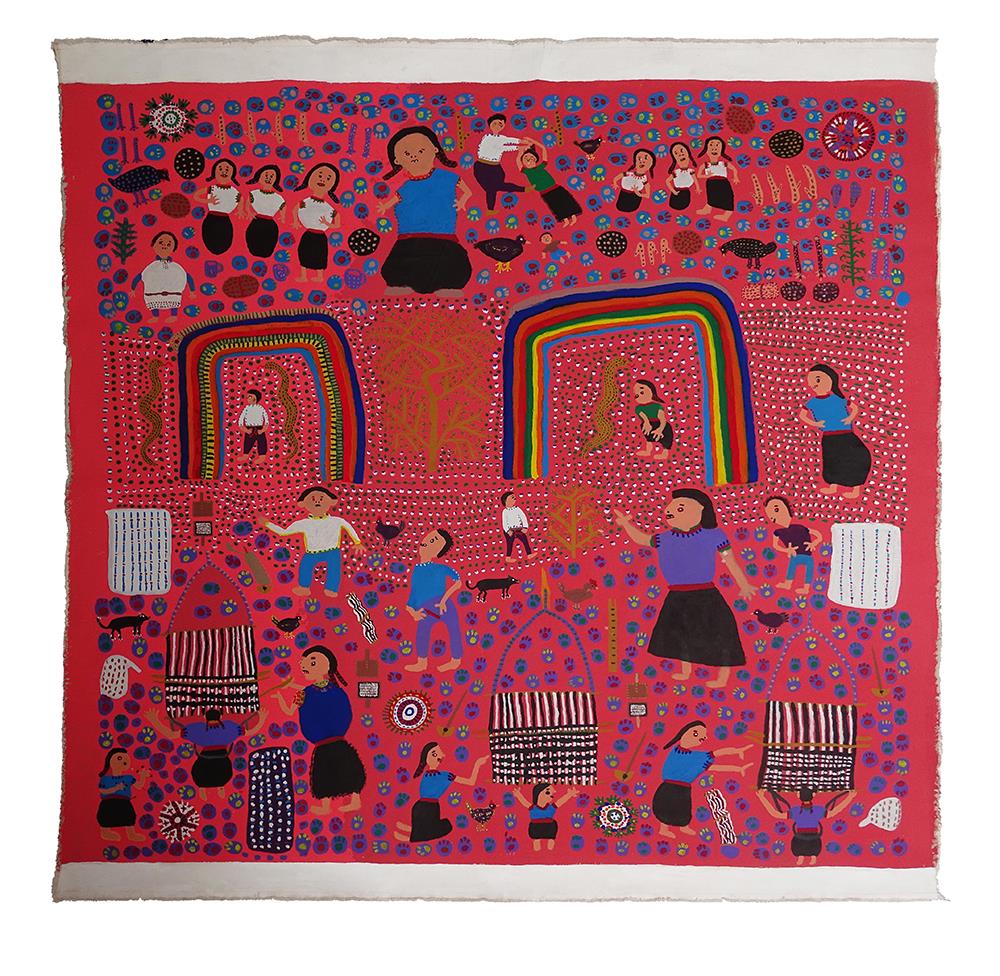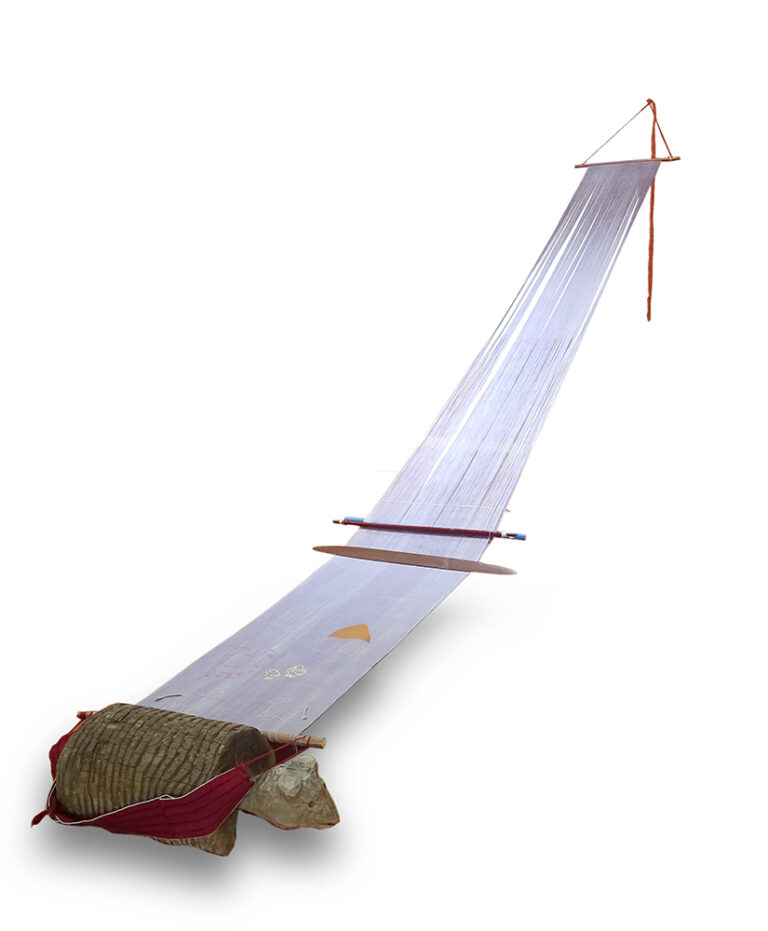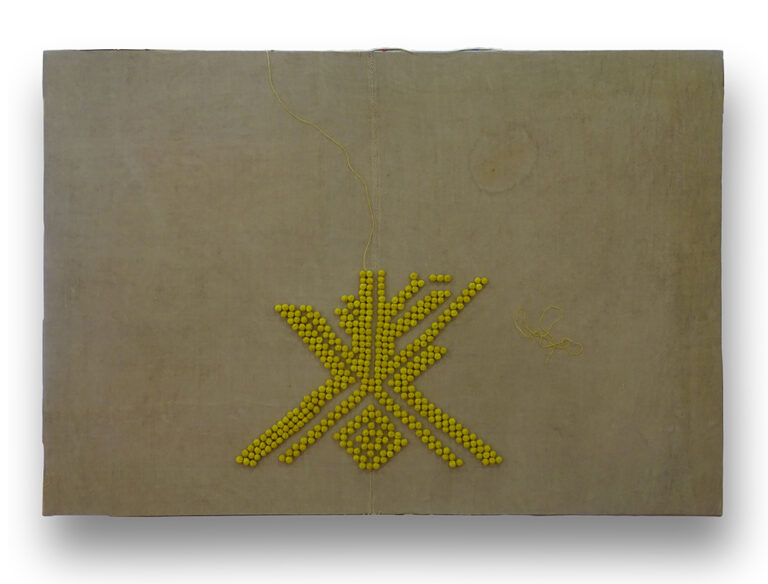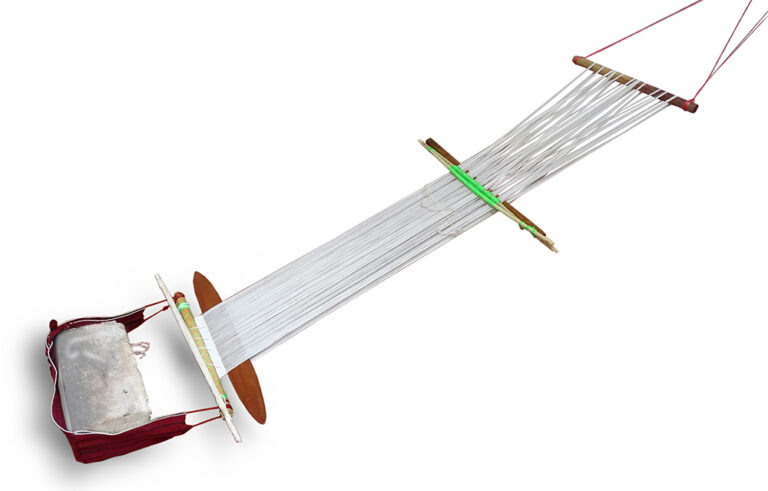- Cecy Gómez (San Andrés Larráinzar, Tsotsil)
- Martha Alejandro (Rayón, Zoque)
- Maruch Méndez (Chamula, Tsotsil)
- Rosa (Huixtán, Tsotsil)
- Säsäknichim Martínez (Huixtán y Chamula, Tsotsil)
Five women, creators of art, (a) tackle the issues that weigh down and lift the women of the Tsotsil-Maya and Zoque-speaking communities of Chiapas, Mexico. The image of the braid comes to mind; with lines of argument (1) socialization and repression, (2) the strangely liberating autonomy of feminine spaces in traditional cultures and (3) the new construction of the original woman, as expressed in art and in life.
The concept that the five generated to capture this project was simply to explore the popular sayings and knowledge that impacted them growing up. As we delve into each saying/belief, a world of premises, and positions, regarding the female gender is encompassed. Through the multiple meetings of the five artists, for more than half a year, they got to know each other in a feminine way: working together, exchanging their stories and their comments on life. “Life of women” remained as the title of this exhibition at the MUY Gallery.
The five women are masters of personal and material transformations. For example, taking up their deep knowledge of textile art, Säsäknichim, Cecy and Rosa transform it by making textile-art (genre of contemporary art). Likewise, Maruch transforms the art of embroidery, by painting figures very freely that amaze us with laughter. Martha takes up the clay tradition and sculpts original archetypal forms.
The transformation of sayings that relegate women to a second place, into worthy and beautiful works, are acts of liberation, from a critical perspective, with the indigenous feminine agency. This is in(ter)dependence: the independence of women from the Tsotsil and Zoque cultures who professionalize themselves, become economic actors, play roles of intellectual, political and spiritual leadership, all while constantly interpellating with their mother cultures of Mayan and Zoque civilizations.
Since this exhibition encompasses both the creations of the artists and the very lives of these women in their struggles and triumphs in life, it is understood as an exhibition-experience, a scenario that will provoke many dialogues through guided tours with conversations throughout throughout his expo-perience in these two months.
Please, women and men, children and the elderly, share your experiences with the creators-curators of Skuxlejal antzetik by contacting Face/Instagram: very interactive gallery, with feminine aesthetics.
Galería MUY
August 13, 2022
Artworks
The nest | Martha Alejandro
Local clay from San Ramón
54 x 46 cm
2022
I made this piece with the reflection of what my mother and grandmother told my sister and me when we were little. When the mothers saw that the girls, approximately eight years old, began to grow their nipples, they looked for sparrow nests and put them on their breasts as a secret so that they do not grow large. In our childhood it was frowned upon for a teenager to have her big breasts, since there was that prejudice of having been with a man.
This piece has the base of a tree stem, the stripes represent the different challenges that each woman has in her life. The sculpture has two breasts: one small and the other larger. This, since the size does not depend on us, but on how our body develops, and therefore should not be a reason to feel any shame. It also has three branches that represent the strength of the woman who lives in her different roles, such as daughter, mothers, wives or professional, etc. At the top represents the nest.
Abundance | Martha Alejandro
Local clay from San Ramón
28 x 15 cm
2022
When I was little we used to make tortillas with my mother. She told us that when we put the tortillas in the tol, we shouldn’t look inside, because if we look the tortillas won’t yield. In this piece I captured the tol with two drawings of a lady and a girl, since it reminds me of my childhood of how my mother shared her knowledge of what she knew; but they were also passed on to her by my grandparents.
Bolimtasel (Get silly) | Säsäknichim Martínez
Textile intervention
Embroidered textile in wool threads dyed in natural dye accompanied by cotton and silk thread.
97 x 90 cm
2022
Membeletike chalik ti mu stak’ ti jetubtasbetik yakan ti viniketike, mu stak’ ti jetubtasbetik k’usitik xtun yu’unik ti abtel, k’ucha’al, yek’el, yasaluna, smachit, skotol k’usitik xtun yu’un ti yabtel yu’un la xyajik, xchi’uk, o mi xbolib sjolik. Jech nixtok k’alal oy jkot vakax jun spukujil, xluchvan, xp’it lok’el ti makte’, spas pleto xchi’uk xchi’iltak, ja’ chak’beik jlik stsek ants yu’un ak’o spas sba ti manxo. Ti tsekile ja’ lapbil xa yu’un ti ants yajval nae.
Huixtec grandmothers and mothers comment that when a man is lying down, a woman cannot pass by to jump on his feet, or ride his feet because he gets silly. He should also not go over to mount his work tools such as the ax, hoe, machete, etc., since he may suffer an accident with his work tools. Likewise, when there is a bull or a cattle that is very brave, that fights a lot or gores a lot, a woman’s Nahua is put on its horns – which has already been used – to tame it and stop being very brave.
This knowledge refers to the fact that the feminine energy impregnated in the Nahua or released by mounting the tools or the feet of the man is strong that it energetically damages the masculine sex.
Ants, vinik, ts’unubajel (Woman, man and sowing) | Säsäknichim Martínez
Textile Intervention
Embroidered textile in wool threads dyed in natural dye accompanied by cotton and silk thread.
160 x 110 cm
2022
A li yan chanubtasel yu’un jmembeltik, jme’tik ja´chal yu’un ti k’usi yabtel antsetik k’alal yorail chich’ ts’unel ti chobtike. Ja’ st’uj sat ixim, sat chenek’, sbek’ mail xchi’uk ts’ol ti antsetike. Ja’uk ti viniketike ja’ yabtel xba sts’un o ti ts’unubaletike , yu’un la me ja’ lek chak’ yiximal, xchenek’al, atsolal, smailal, ep la satin ti k’usitik chich’ tsunele.
The other knowledge held by Tsotsil Huixteco grandmothers and grandfathers indicates that the role of women during the planting season should be to select the seeds of corn, beans and squash. Meanwhile, the role of man is to plant corn, beans and squash, since his energy is masculine and he is the one who fertilizes the land through the use of the coa.
Now, if the woman sows, the seeds grow, but they do not give enough ears of corn, or beans or pumpkins compared to those sown by the man. Hence, both men and women complement each other energetically in sowing as an act of fertilization of life.
Stsotsil sjol ants (Hair and woman) | Säsäknichim Martínez
digital photography
50 x 75 cm
2022
A li abtel to ja’ slo’iltas ti stsotsil sjol ti antsetik te ti slumal Huixtán, ti mu stak xich’ tenel komel butik no’ox, sk’an ti jtsobtik jujun belta k’ak’al jtustik joltik. Mi butik no’ox jtentike, mi nijcham batele, ti jch’uleltike sut me tal, xtal stsob batel skotol butik kilajtik komel.
This photo refers to a knowledge among Tzotzile Huixteca women that a woman’s hair must be tied up every time she combs her hair, wherever she is. Her hair should not be left watered, or lying around. Otherwise, when one dies, our ch’ulel will have to come and pick it up on all the routes we have taken in life. My paternal grandmother told me that whenever I comb my hair and wherever I go, I must put my hair up. The picture shows all the hair collected from childhood to the present day.
Schanel jolo’bil (Learning to knit) | Maruch Méndez
Acrylic on canvas
The painting canvas contains three narratives, three stories or ancestral knowledge.
172 x 179 cm
2022
The first deals with when it was not compulsory for girls to go to school, what life and clothing were like. The importance of weaving and making our own clothing. Everything was knitted.
When a girl grows up she must learn all the activities related to the art of weaving on a backstrap loom, with sheep’s wool. The mother is dedicated to dyeing, while the daughters to weaving. In the narrative she contrasts two teaching styles.
In the first image, the mother remembered how she learned to weave with her mother and she replicated that same practice with her daughter. Her daughter had a hard time learning to weave. When she messes up her daughter’s weaving, she starts beating her hand and head with the wooden machete (weaving tool). The young woman spent her time crying because of her mother’s blows.
In the following image, she talks about the importance of not hitting her on the head, or violating the teaching-learning process. The blows are symbolic, three blows to the hand and to the head, without reaching violence. Another piece of knowledge is that when the young woman fails to weave, her weaving is disassembled, wrapped and taken to throw on the road, so that with it she develops her weaving ability, but she does not learn through blows or blows. physical violence.
She addresses the importance of women to socialize and guide young women from the lekil mantal, “correct instruction.”
Vaknak’obal (Rainbow) | Maruch Méndez
This narrative focuses on the importance of not pointing at the rainbow. The rainbow appears in the afternoon or in the morning. If the rainbow appears where the sun rises, it urinates us too much, it indicates a bad message or a bad omen. On the other hand, if the rainbow appears where the sun hides, it only indicates that it is going to rain too much.
So, for those who have the knowledge, when the rainbow appears in the morning it starts to drizzle (rainbow urine) it is not good to point your finger at it because it rots your finger. There was a time when a boy pointed his finger at the rainbow and his mom told him not to and he got scared. So when he went to sleep, he had nightmares, he dreamed that there was a man who told him that he shouldn’t point fingers. Rather, what should be done is to urinate on him, show him the phallus, with that, he will be embarrassed and the rainbow will disappear.
When the boy woke up, he was touching the penis as a result of the dream. He woke up unaware of his actions, he was already crazy due to the scare caused by his mother forbidding him to point to the rainbow.
The rainbow took advantage of the young man’s fright to steal his ch’ulel and with it, the boy went crazy and no longer healed from that evil and the rainbow won. So there is no use pointing to the rainbow.
You should also cover your head when the rainbow appears, because the drizzle should not wet your body. or you can watch, because it is bad, the rainbow drizzle is very hot, it can cause us some bodily illness.
There are rainbows for women and rainbows for men. Therefore, when the rainbow is a woman, the man must show her the phallus and then the rainbow woman is ashamed and disappears, if the rainbow is a man, the woman lifts her skirt with it, she is ashamed and disappears. Everything that exists in nature, there is its feminine and masculine counterpart.
Chicken wings | Maruch Méndez
The third narrative shows that a woman had her first son and several daughters. When they ate chicken, the boy doesn’t like to eat any piece of the chicken, he only likes to eat the wings, and he stopped eating them until he was 14 years old.
When he grew up he became an extremely jealous and controlling man with his little sisters and with his mother. “He doesn’t allow us to go out, we can’t take long if we go somewhere, he won’t let me or his little sisters go out,” the mother spoke with another woman. And she pointed out that this behavior was because she ate the chicken wings. “Now that he gets married, when he looks for his wife, he will be a very jealous and beating man.”
When he got married, he was still controlling with his wife. Her wife thought that when he has a child, he will give her more independence and freedom. But even though he had a child, he worsened her control over her. Every day he became more jealous, he even beat his wife. He was so jealous and violent that her wife decided to leave him. His mom was very worried and she pointed out that it was because she ate too many chicken wings.
Home | Cecy Gómez
Textile installation
Wood, cotton, muicle dyed
45 x 5.5 cm
2022
I feel that the muicle is a very feminine plant, it dyes depending on the season of the moon or the mood of the person who uses it. In addition to being medicinal, babies are bathed with this plant when they suffer from the evil eye, or to improve blood circulation.
The backstrap loom, belonging to most of the women in this region, is a noble, blessed job, because it allows us to have our children by our side, our little animals are on the lookout for them. While we weave we are close to them, let them feel our company, we do not abandon our children.
Ixim (Corn) | Cecy Gómez
Fabric woven on a pedal loom and dyed with oak bark
Yellow balls of wool, dyed with Barba de León and red with Palo de Brasil
45 x 90 cm
2022
Our fathers and mothers told us that we have to take care of each grain of corn, because its soul is as sensitive as a girl’s. They tell the story of a man who did not take care of his milpa, it was filled with bushes; neither did he go to tap the few ears of corn that he had given. When people passed by on the road, they heard the heartbroken cries of a girl.
Por eso nos decían que no podíamos descuidar nuestros alimentos, porque un día que no tengamos fuerzas de trabajar podríamos sufrir de hambre.
